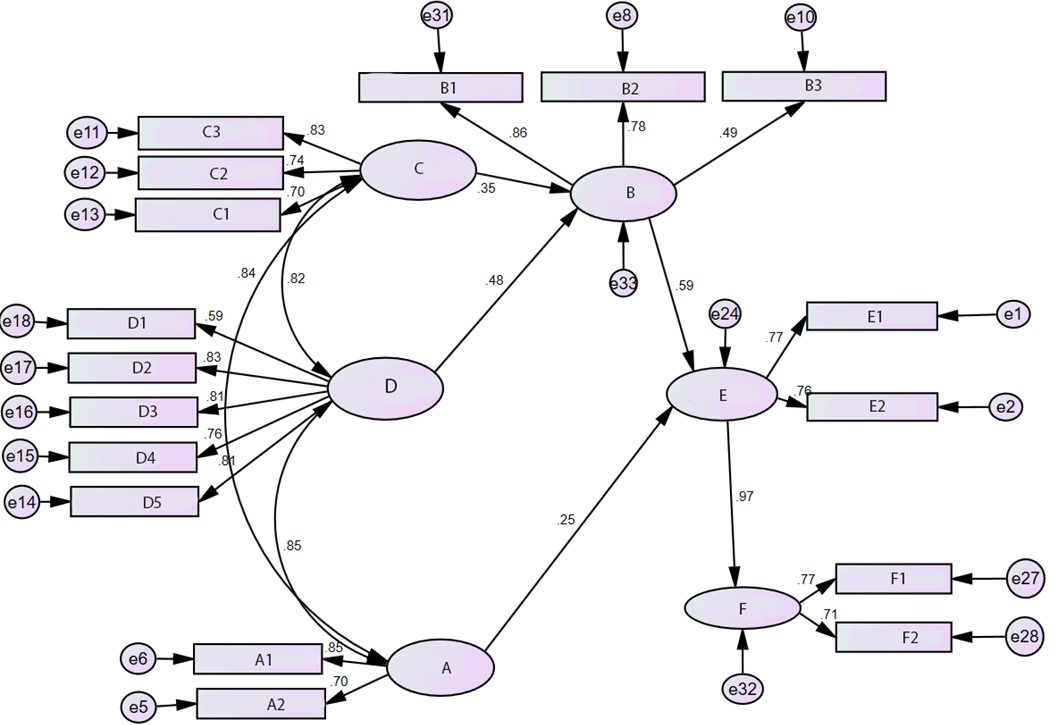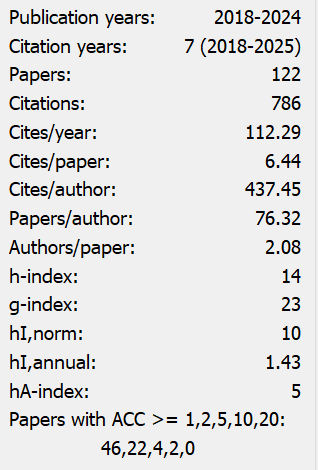The Research on the Growth Pathways and Mechanisms of Tourism Economy Under Cultural-Tourism Integration: A Case Study of the 'Concert + Tourism' Model
Abstract
The report of the 20th CPC National Congress proposes to "improve the modern cultural industry system and market system, and implement the strategy of driving major cultural industry projects. Insist on shaping tourism with culture and highlighting culture with tourism, and promote the deep integration and development of culture and tourism". The article study is guided by the theory of planned behavior , with three concerts and six attractions in Guangzhou, Foshan and Zhuhai as the sample collection sites.
The data in this article was analyzed using a combination of Python crawlers and structural equations: firstly, 1,880 blog posts about "concert tourism" and "performance tourism" were crawled from the microblogging platform using Python crawlers. In order to further analyze the growth mechanism of the " concert + tourism " economy, a structural equation model was constructed.
Based on the conclusions of the study, the article puts forward the following recommendations: strengthening resource integration, upgrading service facilities, enhancing publicity and promotion, promoting sustainable development, and deepening academic research. These strategies will help to better understand and utilise the "concert + tourism" model to achieve sustainable growth of the tourism economy and wide dissemination of local culture.
References
[2] He, Z. (2024). The “performance economy” has become the new traffic code of the city. People's Forum, (03), 100-103.
[3] Judy. (2023). The invisibility and remodeling of “macrostructure”: A framework for consumption analysis. Chinese Social Science, (03), 26-46+204.
[4] Qin, J.-L. (2022). The effect of social media marketing on consumers' rural tourism intention: The mediating role of perceived value. Research on Business Economics, (23), 84-87.
[5] Jia, Y., Ye, L., & Zhao, M. (2023). A study on the influence of village system on rural residents' behavior of domestic waste classification and management: An analysis based on the theory of planned behavior. Ecological Economy, 39(09), 199-205.
[6] Shi, R. (2022). A study on the impact of sports event tourism specificity on tourists' revisit intention: An empirical analysis based on structural equation modeling. Price Theory and Practice, (02), 192-195+203. https://doi.org/10.19851/j.cnki.cn11-1010/f.2022.02.056
[7] Chen, X. H., Li, Y. Y., Wang, Y. J., & Cai, S. J. (2022). Netflix cities, traffic effect, and tourism development. Journal of Management Science, 25(01), 1-22. https://doi.org/10.19920/j.cnki.jmsc.2022.01.001
[8] Shi, S., Huang, X., & Zhang, M. (2021). Is immersion enough? A study on the impacts of immersion experience and meaningful experience on tourist satisfaction in tourist performing arts. Journal of Tourism, 36(09), 46-59. https://doi.org/10.19765/j.cnki.1002-5006.2021.09.009
[9] Liu, H.-Y., Zhang, T.-T., Sun, X., & Wang, D. (2021). Research on the influence mechanism of purchase intention of nonheritage tourism souvenirs based on structural equation modeling. Journal of Northwest Normal University (Natural Science Edition), 57(01), 126-134. https://doi.org/10.16783/j.cnki.nwnuz.2021.01.019
[10] Chai, Y. (2019). Scrutinizing and thinking about the intrinsic value of culture and tourism integration. People's Forum-Academic Frontier, (11), 112-119. https://doi.org/10.16619/j.cnki.rmltxsqy.2019.11.012
[11] Li, G., Pan, Y., & Liang, M. (2019). Research on tourist satisfaction of tourist performing arts based on ACSI Model: Taking Impression Liu Sanjie as an example. Journal of Northwest Normal University (Natural Science Edition), 55(03), 125-134. https://doi.org/10.16783/j.cnki.nwnuz.2019.03.021
[12] Huang, T., & Cha, A. H. (2017). Rural tourism structural equation modeling and metrics. Statistics and Decision Making, (06), 68-71. https://doi.org/10.13546/j.cnki.tjyjc.2017.06.016
[13] Luo, D., & Cheng, C. (2015). Research on synergistic innovation in the integration process of tourism industry: Taking the integration of tourism and performing arts industry as an example. Journal of Xiangtan University (Philosophy and Social Science Edition), 39(01), 70-73. https://doi.org/10.13715/j.cnki.jxupss.2015.01.013
[14] Song, Y., & She, Y. (2011). Tourism performing arts: A new paradigm for tourism marketing. Jiangxi Social Science, 31(12), 221-224.
[15] Fishbein, M., & Ajzen, I. (1975). Belief, attitude, intention, and behavior: An introduction to theory and research. Addison-Wesley.


This work is licensed under a Creative Commons Attribution 4.0 International License.
Copyright for this article is retained by the author(s), with first publication rights granted to the journal.
This is an open-access article distributed under the terms and conditions of the Creative Commons Attribution license (http://creativecommons.org/licenses/by/4.0/).


























